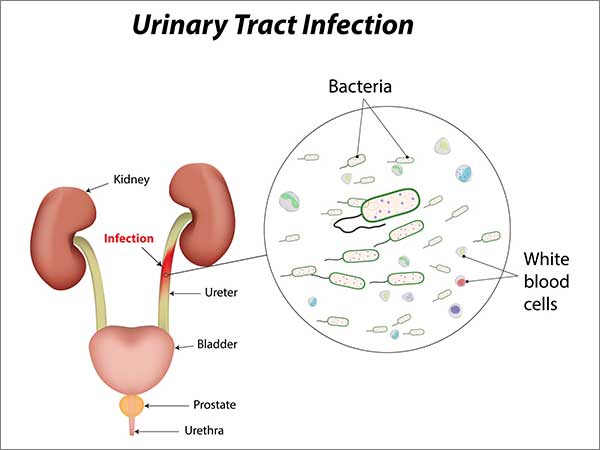Urinary Tract Infection

Urinary Tract Infection (UTI): Understanding and Managing the Condition
A Urinary Tract Infection (UTI) is a common ailment characterized by the infection of the urinary tract, typically instigated by microbial agents. The urinary tract encompasses vital organs such as the kidneys, ureters, bladder, and urethra.
Causes and Symptoms
- Microbial Causes: Bacteria are the primary culprits behind UTIs, with fungi occasionally playing a role. Viral infections, though rare, can occur, especially in individuals with compromised immune systems.
- Lower Tract UTIs Symptoms:
- Burning sensation during urination
- Increased frequency of urination with reduced volume
- Urgency to urinate
- Presence of blood in urine
- Cloudy or dark-colored urine
- Strong-smelling urine
- Pelvic pain in women or rectal discomfort in men
- Upper Tract UTIs Symptoms:
- Pain and tenderness in the upper back and sides
- Chills
- Fever
- Nausea
- Vomiting
Diagnosis
- Physical Examination: Initial assessment by a healthcare provider.
- Urine Tests: Collection of a ‘clean catch’ urine sample to identify microbial presence, with high levels of white blood cells indicating infection.
- Diagnostic Imaging:
- Ultrasound: Provides detailed images of urinary tract organs.
- Intravenous Pyelogram (IVP): Dye injection followed by X-rays to highlight urinary tract structures.
- Cystoscopy: Insertion of a camera-equipped tube into the bladder for visual inspection and tissue sampling.
- CT Scan: Offers detailed urinary system images.
Treatment
- Bacterial Infections: Antibiotics are commonly prescribed to eradicate bacterial UTIs.
- Fungal Infections: Antifungal medications are administered if fungal agents are identified.
- Viral Infections: Antiviral drugs are prescribed for viral UTIs, although these are less common.
